Read Guangzhou · Yueyun | The three "famous schools" gathered in Guangzhou, the scholarly is nearly a thousand years
Author:Guangzhou Daily Time:2022.07.20

Read the 28th issue of Guangzhou
Let the city keep memory and let people remember nostalgia.
Guangzhou is a cultural city with a history of more than two thousand years. There are long stories in the streets and alleys, and there are timeless memories of bricks and tiles. "Yueyun Weekly", to appreciate the city's heavy memories with you, appreciate the spiritual tradition of tolerance and opening up for more than 2,000 years, and appreciate the endless texts and scent of text; with you in the light of history, understand today, understand today, understand today, understand today, understand today, understand today, understand today, and understand today. Reading Guangzhou, thus strengthen cultural self -confidence.
Guangzhou prestigious schools have been in ancient times. Today, there are Guangya Middle School, Huadshi Affiliated Middle School, Guangdong Experimental Middle School, etc., in ancient times, there were Guangfu Xue Palace, Nanhai Xue Palace and Panyu Xue Palace. The three major "famous schools" in Guangzhou began in the Song Dynasty. At that time, Guangzhou City was in charge of Nanhai County and Panyu County at that time, thus forming a cultural wonders from the two cities of the two counties of Yizhou and Nanhai and Panyu. From the Song Dynasty to the Ming and Qing Dynasties, the Guangzhou culture, the court heroes, and the famous business of businessmen came from these three official "famous schools".
Haohao soup in history, the palace of the palace serves the imperial examination. By learning the Confucian classic theory, the mission of reshaping the students' world view ends with the abolition of the imperial examination system, but the value of the sages and the teachers of the teacher, and the talents of rigorous studies The cultivation concept continues to bloom in new schools, new memorial halls, new cultural museums and other places.

Three famous universities
Raise the head field to recommend 文, Shiwen means dragon. In front of the court, he mosested with osmanthus, and Feijie is good at this autumn. —— Song Li Yingying
Guangfu Academic Palace is the earliest and highest level of official studies in Guangzhou. It was founded in the four years of the Northern Song Dynasty (1044 years). The Nanhai Academy and Panyu School Palace are the place where Nanhai County and Panyu County are located, and they are all built in the Southern Song Dynasty. One city and three studies have become the cultural wonders of ancient Guangzhou. Nowadays, the Guangfu Xue Palace and the Nanhai Xue Palace have disappeared. Only the ancient and ancient buildings of Panyu Xue Palace have been retained, telling people a thick cultural memory.
Guangfu Xue Palace is known as "Lingnan No. 1 Confucian Forest"
In mid -July, the high school candidates in Guangzhou received a notice from high school admission. Guangya, provincial solid, dedicated letter, Peizheng ... Many hundred -year -old schools in Guangzhou, no one knows, no one knows, frequently searches on hot search. However, few people know that there are also three famous universities in the ancient Guangzhou city, namely the Guangfu Xue Palace, Nanhai Xue Palace, and Panyu School of Palace in the Song Dynasty. They are equivalent to the current public schools, which should be responsible for inheriting Confucian culture and implementing etiquette and music education. At that time, Guangzhou City was in charge of the Nanhai County and Panyu County (the west of the Nanhai County and the east of the city of Panyu County), so Guangzhou Jizhou Xue and the two counties studied in one city, which was rare in the country.
Guangfu Academic Palace was the highest -level government -run palace in Guangzhou at that time. It was founded during the Qing Dynasty of the Northern Song Dynasty and was located in the area of Jinta Road. After several migration, it was located in the three years of Shaoxing (1133) in the Southern Song Dynasty. At that time, there were jade belts in front of this area, hillsides in the back, Wenxi on the left, and Xianhu on the right. In the Song Dynasty, the first exploring flower Li Yingying in Guangdong used the "style of writing to make Zhang" to describe the style of Guangfu Xue Palace. The Map of the Guangfu School of Guangfu, which is currently existing in the Guangzhou Museum, shows that the buildings of the Guangfu School of Guangfu in the Ming Dynasty are all north to the south. arrangement. During the heyday of the Qing Dynasty, the scope of Guangfu Academic Palace included a large area between Zhongshan Road, Wende Road, and Civilization Road to Fu Xixue Street. Lu Elementary School and Sun Yat -sen Literature Museum are within this range. At that time, foreigners came to Guangzhou to play.
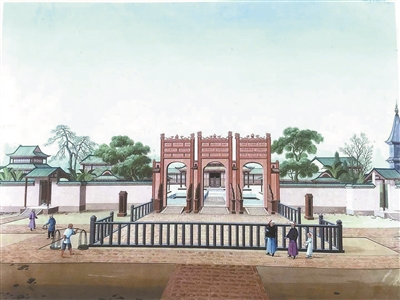
Nanhai Xue Palace in the Qing Dynasty. Picture source: "The Essence of the Qing Dynasty Painting of the Qing Dynasty"
Nanhai Xue Palace was an official school in Nanhai County at that time, which was originally attached to the East Palace of Guangfu School. In the second year of Jiading of the Southern Song Dynasty (1209), it was built near the county. According to local records, after many years of repair and expansion, the South China Sea Academic Palace has the widest scope, east of liberation to the middle, the west to the present, and the south to the present Yuhua Fang, and the north to Pingli. The Lingnan talents of the Ming Dynasty and Wu Bingjian, the richest man in the world of the Qing Dynasty, were all the "alumni" of the Nanhai Xue Palace.
Unfortunately, in the "Three University Palace" in Guangzhou, the buildings of the Guangfu Academy and the Nanhai Academic Palace have been annihilated. Only the Panyu School Palace as a Guangzhou farmer's lecturer, and most of the main buildings are still preserved. One of the palaces is known as "the Palace of the Three University of Guangdong".
Panyu Xue Palace is at today's Zhongshan Fourth Road Agricultural Lecture Institute
The lower Dongyong elevated, turning into the fourth road of Zhongshan about 200 meters. The right hand side is the Guangzhou Agricultural Lecture Institute. This is also the only place that people can experience and experience the culture of Guangzhou in ancient times today.
Panyu School Palace was the highest official school in Panyu County at that time. According to the local records, the Panyu Xue Palace was originally attached to the Guangfu Xue Palace. After a few days, in the three years of Ming Hongwu (1370), he was built in the current site by Wu Zhong of Zhixian County, Panyu County. The construction of the school palace is sitting north to the south, and the walls of the yellow tiles are surrounded by the courtyard. They are both rigorous and regular, but also sparse and natural.
The gate of the school palace is shocking. It is composed of three gates and six pillars. It is called the Xingmen Gate. It is made of granite stone. There are bases under the six square columns. According to the staff, there was still a wall photo in front of the Xingxingmen, but it was demolished when the road was built. According to historical records, the Star Gate is also known as Lingxing Gate, and "Spirit Star" was originally the constellation name (the meaning of "talent"). In ancient times, the gods in charge of the agriculture were the spirit stars. During the Northern Song Dynasty, the Confucian Temple was used by the spiritual gates, which means to respect the holes with the specifications of the sky, and later changed to the Xingxingmen. It is the standard of Xue Palace. The introduction of the Da Ying's export paintings in the Chinese Qing Dynasty specially collected by the British Library. Panyu Xuegong
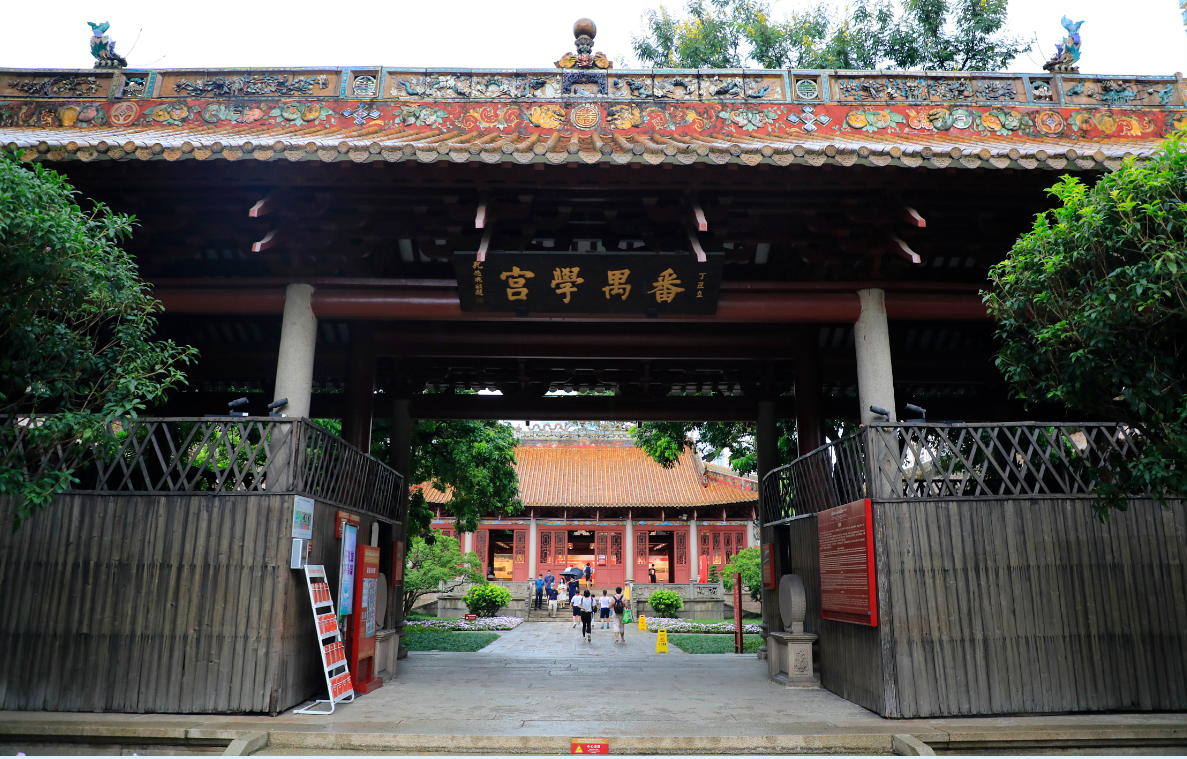
Tour the Xingmen Gate, and half of the round pool is called "泮 pond". The water lily in the pond blooms a small flower, and the fish is playing in the pool. They do not know how many students have respect for their hearts because they see the "Pond". According to historical records, a university "Gong Palace", a university from the princes of the Western Zhou Dynasty, means "half in the palace of the emperor". Later generations called "Ponds" as Confucius's ink washing pond, and the "Pond" must be set up in the palace. When you enter the school, you must walk around "泮 泮", called "entering". The arch bridge is called the champion bridge. In ancient times, only people with well -known achievements could pass the bridge.
About 30 meters behind the champion bridge, and the elegant and solemn Dacheng door came into view. The top of the hard mountain, the four corners were slightly tilted, and the four large characters of the "Panyu Xue Palace" under the eaves were particularly conspicuous. There is a stool at the connection between Dacheng Gate and the earrings next to the ear houses. The text engraved on the top of the "Bandai famous sage, Qianqiu Zheshi turned back" shows that the ancient school palace was a place to cultivate talents and sacrifice sages of sages.
Dachengmen is magnificent enough, but never thought, it was just a "door". Passing through Dacheng Gate, behind the quiet courtyard is the largest building in the palace, the highest architectural level, and the most beautiful decoration -Dacheng Hall. Dacheng Hall was named after Confucius was "the Great Capital of the Ancient Sacred Sages", and only opened the door on the front, and there were no doors and windows on the other three sides. At that time, Confucius, Yan Hui, Mencius and other sages were worshiped in this hall. New students who entered school must go to Dacheng Hall to worship Confucius and other sages. However, there is no statue of Confucius and cards in the Dacheng Hall now, and the hall has been opened as a exhibition room. Bypassing the Dacheng Temple to go backwards, it is the Temple of Chong, originally a place to worship the five ancestors of Confucius.
The Panyu Xuegong Collection Confucius Temple and the school are one of the Chongsheng Temple. The Confucian Temple part is basically finished. Next is the place where the official "worshiping teachers" can be seen. The class is in the Minglun Hall on one side of Dacheng Hall. The word "Minglun" comes from "Mencius", taking the meaning of "clarifying and teaching people's morality to students". Minglun's small and deep courtyard is deep. How students who listened to class that year made people think of reveries.
Chen Hongjun, a research librarian of the Guangzhou Museum, told reporters that the construction of the Guangzhou Academic Palace has been completed in the Ming Dynasty. It integrates schools, preaching, and festivals. High specifications and large scale are often the "sanctuary" of a cultural education. The layout of the school palace is imitated in the Qufu Confucian Temple, and the middle -through axis, left and right symmetrical.
Panyu Xuegong
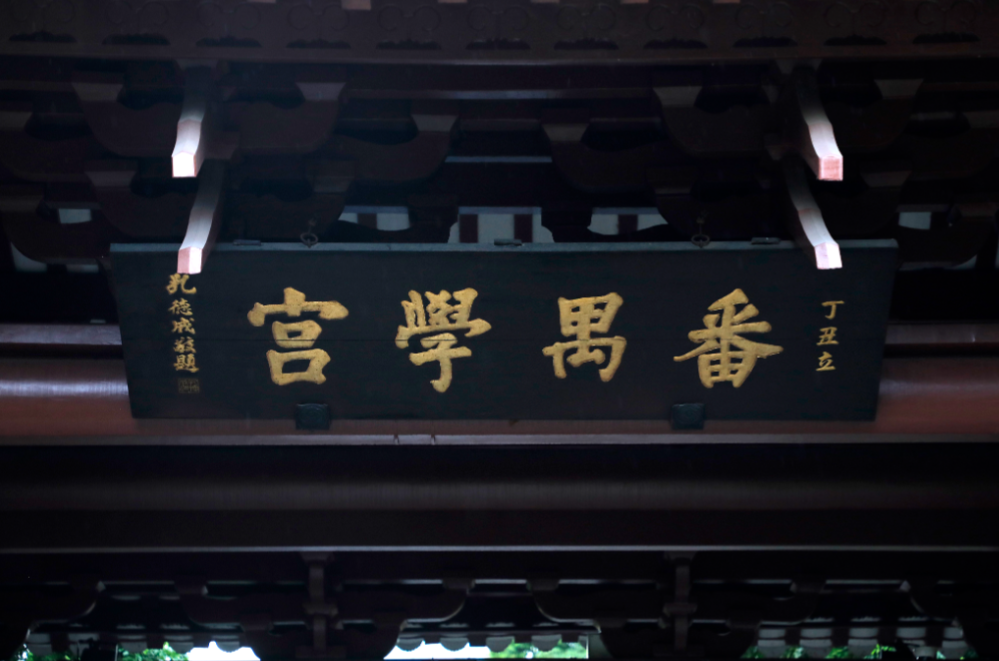
Study palace life
"Article twelve of the ban on the ban, setting up the monument to the world, and the left of the Minglun Hall. It does not follow the theory of violation of the control." - "Ming History"
What is Xiucai learning to learn the palace?
Learning Confucian classic reshaping world view
New students enrollment "enrollment ceremony"
New students enter school. At that time, the enrollment ceremony was called the "four great gifts" of life with adults, weddings and funerals. Therefore, on the day of the enrollment ceremony, the academic politics must come to participate in person. In order to avoid farmers, the enrollment ceremony was often carried out in the "Summer of August". The enrollment ceremony of the school palace is very particular about it. For the teenage children, it is really excited and hard.
At the end of the Qing Dynasty, the flowers and Guangzhou Shang Yanzheng wrote the scene of the enrollment ceremony in the memoirs, which can make future generations look at the school's enrollment ceremony. According to Shang Yanzheng's memories, in the 16th year of Guangxu (1890) in the Qing Dynasty, at the age of 17, he took the talent with excellent results. On the day of the enrollment palace, Shang Yanqi wore blue robes, satin boots, red caps, and red flowers, which was very prestigious. He came to Xuezheng Gate in a big sedan, met with other talents, and met the school, and then came to Xue Palace. When I saw the stone monument with "civil and military officials running to the horse" next to the Xingmen gate, everyone stepped into the sedan. After the Xingxingmen, under the leadership of the school, the show was surrounded by the pond, and then passed through Dacheng Gate to come to Dacheng Hall to worship Confucius, Yan Hui, Mencius and other sages. In the end, a group of forthcoming showcases set a preface in Minglun Hall, to the gifts of teachers and students waiting here. After seeing the teacher, the enrollment ceremony is basically over, and the freshmen can go home to meet the respect. Some showcases also thanks to the teachers who have taught themselves before. A teenager, one day, is really hard enough.
The statue in the Guangzhou Agricultural Lecture Institute shows the scene of teaching in the palace that year.
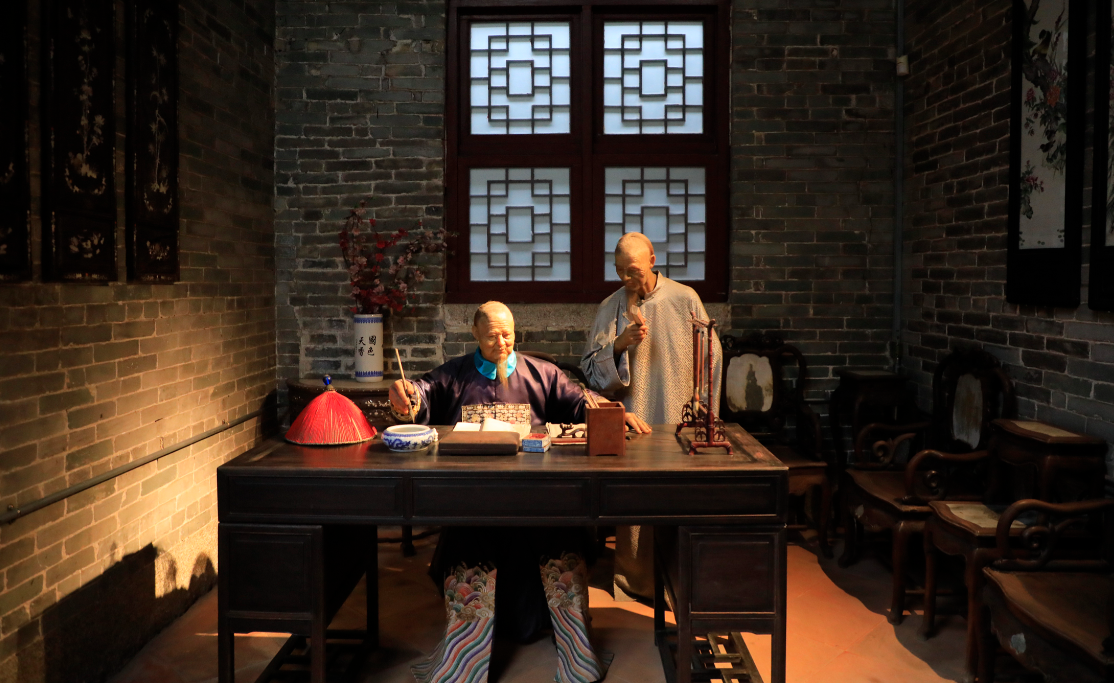
Research on the hard study of "benevolence, righteousness and wisdom"
Xiucai entered the school palace, and it did not mean that it entered the imperial examination safe, and the road behind was still long. According to expert research, Xiucai has to learn worship worship, read Confucian scriptures, learn horses and archery. If you do n’t have a class for a year, you will be disqualified from being expelled. Therefore, it is difficult to mix in graduation if you do n’t learn in the palace.
According to the "Panyu County Chronicle" during the Tongzhi period of the Qing Dynasty, the day of the Panyu Xue Palace will be held on the day of February and early August each year. On the day of the sacrifice, there were special bands.
Since it is a palace, cultural classes are naturally indispensable. Mainly learn the four books and five classics, "benevolence, righteousness and wisdom", learning the way of "self -cultivation of Qi family to rule the country", and laying the foundation of Confucianism for the future career. According to expert research, in ancient times, Xiucai took classes in the palace. The main courses include Royal Classics, Scholarship of Sexual Laws, Book of Songs, Ancient Wens and Twelve Classics, Twenty -Four History, and Three Connect. Among them, the Emperor's Classic is the interpretation of the scriptures compiled by the emperor's order, and the science of sexual theory is Cheng Zhuxue. These contents are Confucian classics, reflecting Confucian philosophy, politics, ethics, and education. In addition to explaining the classics in the class, you will also teach the preparations for students to participate in the township test. As the saying goes, "Xiucai encounters soldiers, and it is unclear." Do you think Xiucai is just a weak scholar? In fact, there are not only Wen Xiucai in ancient times, but also Wu Xiucai. Moreover, even the ordinary school palace will have a special venue (called shooting garden) to let Wenxiu learn to ride archery. However, in view of the venue, most of the palaces taught students to shoot arrows to continue the "six arts" of the ancient "six arts". In ancient times, the "six arts" were "ritual, music, music, shooting, royal, books, numbers". "Shooting" is second only to etiquette and music. For cultivating talents, it is meaningless. And riding archery is closely related to martial arts. Therefore, in the Song Dynasty, the Palace of Xue Palace has set up shooting gardens around the campus, and setting a shooting target in the garden. However, in the Ming Dynasty, the course of riding archery in the palace was gradually diluted, especially in the middle and late Ming Dynasty, many Xuegong shooting gardens were abandoned or used separately.
Minglun Hall
Isn't the monthly exam and seasonal exam? It's really tired, but can't help but take the test. This is the study and life of the ancient school palace students. There are monthly exams and quarterly tests. On the second day after the monthly or quarterly exam, students must gather in Minglun Hall and listen to the teachers' recitation of the "Lie Stele" and the trainer, which is called the monthly lesson. "The Bei Bei" is equivalent to the school's prohibition of schools, student conservation, etc., and each student must keep in mind.
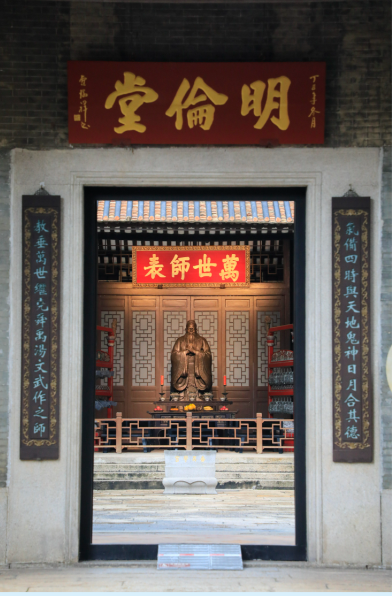
"History of the Ming Dynasty" records that "(Hongwu) fifteen years of school presented in the country's prison, and the bans were issued twelve examples of the world, setting up the monument, and the left of Minglun Hall. "Biography of Children and Heroes" has a line saying, "What a ceremony is the national Jing Jing's scholar! ... What kind of unwilling to follow the ritual law? Do not keep the" lying monument "?" People should adhere to lying monument and keep themselves in peace. During the Ming and Qing dynasties, the constraint clause was on the stele, and the tree was on the left side of the Minglun Hall. Therefore, this type of monthly lesson is very important for students. According to the provisions at the time, in addition to special reasons such as illness, travel, and filial piety, the show will not be given three times in the last month. Excaliates qualifications.
The big test is the year -old test and scientific examination, which is a ability test, similar to the current level of various exams. Both exams were presided over by the emperor's school and politics. The content of the test is "Four Books and Five Classics", and the "Holy Temples" is written in the same way.
There is a saying in the Qing Dynasty that "Hanlin is afraid of big tests, Xiucai is afraid of year." At that time, the provincial schools and politics will take the examination of all students, and whether the results decide is downgraded or upgraded. According to the "History of the Ming Dynasty", the year of the year of Xue Palace is divided into six levels. The first three grades will not rise or fall. Two, two -third -three class will not distribute allowances. However, the fourth equivalent is punished, and the fifth is to be downgraded. For example, it was originally born. The scientific examination is the qualification examination for sending students to participate in the township examination. The results are roughly divided into three class. The first, second and third -class ranking can only take the township test.
After three years of study, when students graduated, the worldview has been reshaped, which is very different from before the enrollment palace.
Yan Jinyan
The second county of Guangzhou, the South China Sea, is Panyu, the vulgar is still beautiful, there are many talents, and there are Zou Lufeng. ——The Qingzhuang
Selection method: Interview with a written test.
Entrusted candidates: Xiucai (the Ming Dynasty stipulated that over 15 years old, the Qing Dynasty was relaxed), talented, neat appearance, and four books of "On" and "Meng".
The admission rate is less than 1%
During the Ming and Qing Dynasties, if you want to take the exam, you must read the palace first. Liu Dan, an expert in the Guangdong Provincial Museum, said that the person who was admitted to the school was called Xiucai. If Xiucai did not enter the school palace (except the national prisoner), he could not participate in the township test. Just as the Qing people Ye Mengzhu said: "Those who are admitted to the puppet, and the later school will be re -entered."
However, to get a notice of reading the "Xue Palace", it was very bumpy. Although the conditions of the Qing Dynasty were relaxed, it was still not easy. The famous Kang Youwei was considered to be a world -world. His father was aware of the county. When he was 11 years old, he read the four books and five classics. But even so, he got the title of "showcase" three times in a row. In order to test a talented identity, Hong Xiuquan was a three -war and three defeats.
If the scholars want to enter the school palace, they will toss people enough to register. Not only is it required to be correct, "the talent is handsome, the appearance is neat", but also the "Reading" Du "" The Four Books of Meng ". In the Ming and Qing Dynasties, in order to prevent the "Gunners" from the test, in addition to filling in the name, age, native and ancestral resumes when registering, they also need to fill in the most obvious physical characteristics, such as melon seeds, willow -leaf eyebrows, moles on their foreheads, and long mouths have long mouths. Beard, etc. In order to protect the identity, there must be a student (first -class student in Xiucai) as a guarantee, and some of them need five applicants to protect each other.
After reporting the name, you also have to break through the "three levels" of the county test, government trial and hospital test. Due to limited places, only a few people can finally be admitted to Xuecai. Wang Zhaoyi, a scholar of the Qing Dynasty, recalled that in the six years of Guangxu, Panyu County "36 places and more than 4,000 candidates." 36 places, more than 4,000 people applied for the exam, and the admission rate was less than one percent. After these three levels of luck, the lucky one, not only got the qualifications of entering the school palace, but also won the identity of the talent, and finally took the first step in the name of the imperial examinations of life.
Lingnan talent surprised Qianlong
The way out of the government, states, and counties in various places, states, and counties in the Qing Dynasty was mainly to take the imperial examinations, obtaining people or juniors, and thus embarking on the career. Of course, another way is to enter the state prison through the tribute to the tribute, and then grant officials as appropriate. This is called tribute. However, only a small number of tribute members. According to the statistics of the "History of Yuexiu", there were more than 1,400 people among the members of the Palace of Panyu in the Ming and Qing Dynasties, and more than 900 people were awarded the county officials and the instructor of the school palace (including the scholars and the scholars).
Chen Zizhuang, a member of Panyu Xuegong, is known as one of the "Sanzhong in Lingnan in the late Ming Dynasty". Kang Youwei's teacher Zhu Ciqi was called "the two Confucian Confucianism in Lingnan".
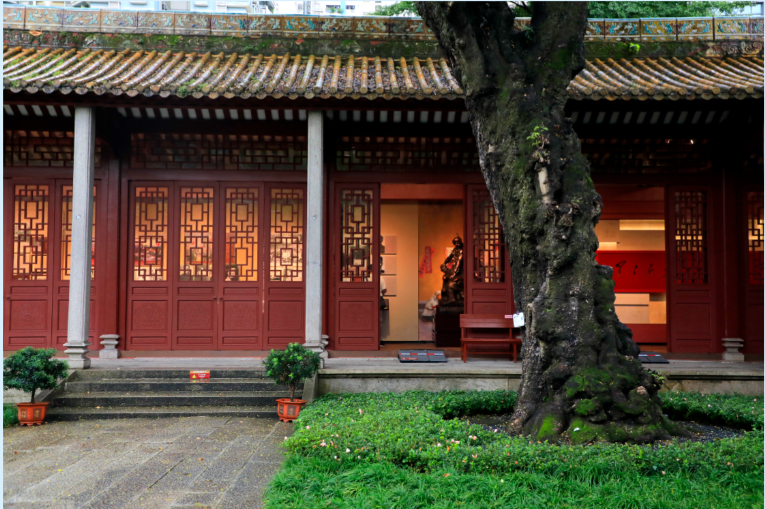

The imperial examination of Qianlong (1739) changed the fate of 328 people. The most dazzling is the champion of the champion that came out of Panyu Xue Palace. According to historical records such as "Panyu County Chronicle", at the time of the trial of the palace, the reading official appreciated the test papers of Zhuang Zhuang, pushed to the first, and entered Emperor Qianlong. Emperor Qianlong ordered the college school to open the first place in court to check, and found that the Cantonese Zhuang was respectful. Qianlong was very surprised: "The distant province of Guangdong is out of the champion?" Gan Ru, the Ministry of officials, replied: "There were several people in the former dynasty, and the dynasty never had it." It is quite gratifying to get the champion today. "Therefore, Qianlong Qinzhuang pointed to the champion, awarded Hanlin's compatrion, and served as a repairer of the National History Museum. Later Among the Guangzhou people in the city of Chengyi House, the highest court officials are the officials.
Inheritance today
Most of the main buildings of Panyu Xue Palace have basically been preserved. After the founding of the People's Republic of China, it was opened as a memorial hall of farmers' lectures. It was the first batch of national key cultural relics protection units.
After vicissitudes of vicissitudes
Wenmai inheritance forever
At the end of the Qing Dynasty, the imperial examinations were abolished.
In 1902, Wu Daoyu and others used the Xiaoyu Temple and the former site of the Guangfu Palace as the school building. The establishment of a loyal middle school was founded. To this day, it is the 13th Middle School of Guangzhou. In the second year of the imperial examinations (1906), Panyu Middle School was founded in Panyu School. After renamed Bayui Middle School and Guangzhou No. 15 Middle School, it was included in Guangdong Overseas Chinese Middle School today.
After the 1920s, the school palace in Guangzhou changed a lot. In 1926, Mao Zedong hosted the 6th Farmers Movement Publicity Center in Panyu Xue Palace, so that the school palace became a revolutionary school to cultivate farmers' sports cadres. There were 327 students in the current students.
In 1933, Guangzhou built a city Zhongshan Library at the original site of Guangfu School, which is now Sun Yat -sen Literature Museum. After the founding of the People's Republic of China, the original site of the Guangfu Academic Palace established a cultural and educated place such as Guangzhou Workers Cultural Palace, Wende Primary School, and Guangzhou 13th Middle School.
Most of the main buildings of Panyu Xue Palace have basically been reserved to this day. Yan Hui, director of the Memorial Hall of the Guangzhou Agricultural Lecture Institute, said that in order to let people feel history, after the founding of the People's Republic of China, the government conducted large -scale maintenance of the Panyu Xue Palace and opened up a memorial hall as the Agricultural Lecture. The revolutionary memorial established by the State Council was listed as the first batch of national key cultural relics protection units in 1961, becoming the cultural land of Lingnan and continuing Lingnan's veins.
Guangzhou Children's Library next to Panyu Xue Palace
"Open" etiquette to experience the life of the ancients reading
Today, the Memorial Hall of the Guangzhou Agricultural Lecture Institute has become the research and education base of primary and secondary school students in the country. Various exhibitions and various cultural activities have been held all year round. Especially for the annual winter and summer vacations and the opening season, a group of students have a group of students in the school palace to "open a pen". Such a picture is thick, harmonious, and beautiful.
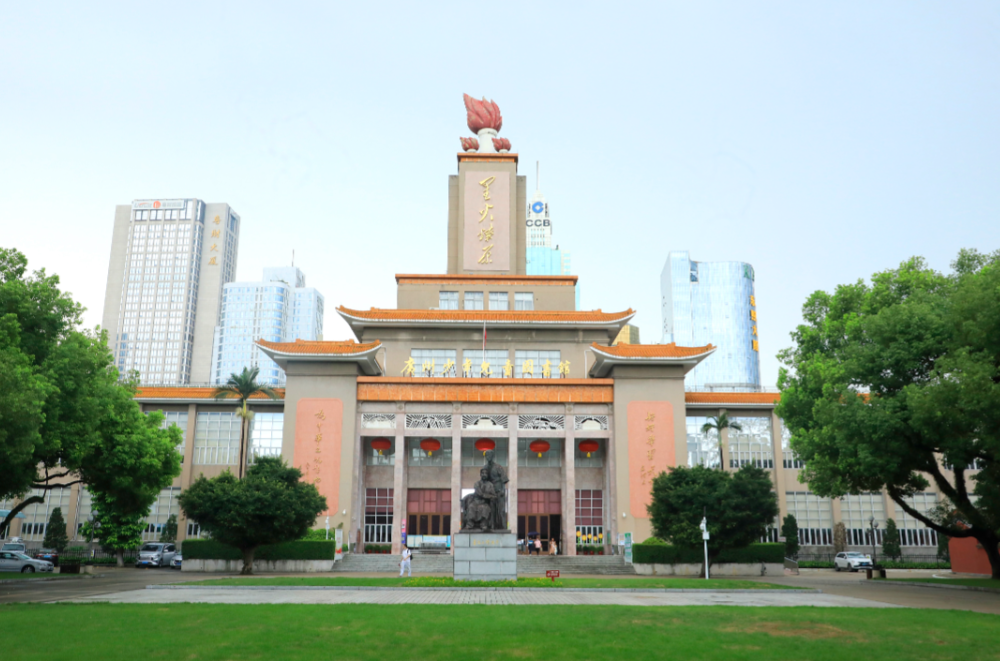
What is "opening a pen"? The ancients attached great importance to education. Although parents do not have to hold the "degree room" with silver, they will choose to enter the school date for their children. On the day of enrollment, parents lead their children to private schools. "Entering the Confucius Gate", otherwise it will be "irregular"; if you worship the private school, this will be considered officially introduced. The "opening ceremony" reflects the spirit of attaching importance to education and respect for teachers.
According to Yan Hui, since 2004, the Panyu Xue Palace has held a "opening ceremony" almost every year in order to allow children to appreciate the traditional culture of respecting teachers and religion, to know the courtesy in the ritual of ancient rhyme. "This form of enlightenment education is becoming more and more popular."
In August 2015, the three -year -old Hong Kong Hong Kong -named Confucius, accompanied by his parents and two brothers, made a special trip to the Memorial Hall of the Agricultural Lecture. He was led by the teacher and then came to Minglun Hall. The teacher ordered the red mole to explain the way of Xi Li Shangxian and the teacher. Prior to this, his two brothers had "opened a pen" in Panyu Xuegong in 2006 and 2011. The three brothers of the Kong family have been influenced by excellent traditional culture since childhood. Grandpa made the tire hair left by the three brothers when he was born for the first time after his birth. According to the tradition of the Kong family, the child must "open a pen" at the age of three and participate in the "opening ceremony", and hand over the brush to the enlightenment teacher. "Maybe the children seem to understand it in the process of writing, but the principle of doing things will gradually internalize the mind. This is the best inheritance of excellent traditional culture, and it is also impossible to replace it." Yan Hui said. In recent years, "opening a pen" has become more and more valued by parents and schools. New students such as Guangya Middle School, Dongchuan Road Primary School, and Guihuagang Elementary School have held "opening gifts".
Ten steps to start a ritual
1. Xue Palace Gathering: Children who participated in the "opening ceremony" came from various places to the Panyu Xue Palace in Guangzhou.
2. You are enrolling in school: Children lead the teacher's leader in the teacher's leadership, and pass the Qingyun Bridge to experience the success of the ancient scholars.
3. Real the ceremony: sort out the clothes, accept the enlightenment education of the enlightenment teacher with the best mental appearance, and then bow to Confucius.
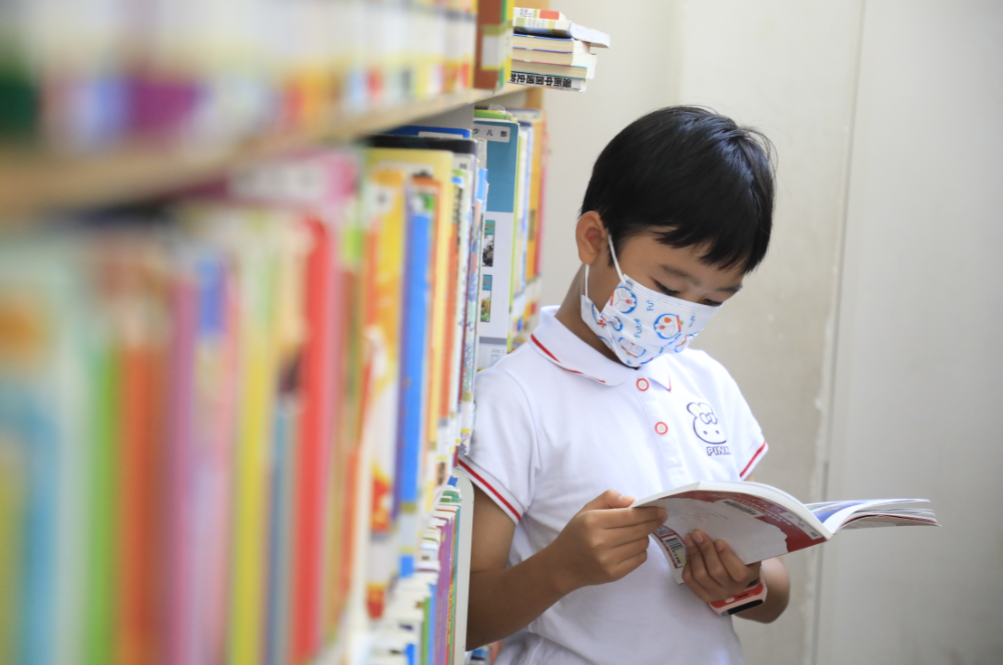

4. Smart wisdom: The pens of the pen to the middle of the child's forehead, the cinnabar mole, means opening the wisdom of school children, and can pass through at all.
5. Filial piety to the teacher: salute to the enlightenment teacher and parents, and worship the tea.
6, knocking bells and sending: "All rituals and music are available, which means virtue." The child rang the bell, bathing human wisdom in the bright and melodious bell.
7. Drumming Mingzhi: Holding the Qiankun step by step, the more the drums are, the farther the existing ambition.
8. Famous teachers' writing: The old gentleman, the old gentleman, taught him hand and write horizontally, vertically, and letting his childhood bath culture.
9. Li Cheng's certificate: receiving the opening certificate issued by the teacher, listening to the teacher's teachings, and the smile blooms on the face of each child.
10. Flying dream: Children write their wishes on the wish bar, show their wings with a positive and healthy attitude.
Panyu Xuegong Xiaoshi
Xuegong, also known as the temple, was first seen in the Western Zhou Dynasty. At the beginning, it was the "six arts" of the noble children. It became an official school. It was the product of the combination of temples and official studies in history. Panyu Xue Palace was a representative cultural temple building in the Lingnan area of the Ming and Qing Dynasties.
According to the "Panyu County Chronicle" during the Tongzhi period of the Qing Dynasty, the Song Dynasty Chunye was founded during the southeast of the county during the Song Dynasty, and was later destroyed. In the three years of Hongwu in the Ming Dynasty (1370), Li Xin, Wu Zhong, was built in Dongcheng by Zhixian County, and was destroyed by the fire. In the thirteenth year of Hongwu (1380), it was rebuilt in this site and was burned again after completion. The current pattern of Panyu Xue Palace was formed in the 12th year of Qianlong (1747) in the Qing Dynasty, and the fifteen years of Daoguang (1835) was rebuilt.
During the Daoguang period, the rebuilding Panyu Xue Palace pattern was "right temple and left school", which was divided into left, middle and right three -way building. Mid -road buildings include Yingxingmen, Tongchi, Dacheng Gate, Dacheng Hall, Dongzheng, Xizheng, Chongsheng Temple, Zunjing Pavilion, etc. The left architecture includes Minglun Hall, Guangye Hall, Mingyu Temple, etc. The architecture includes Jiexiao Temple, Zhongyi Filial Temple, Xiangxian Temple and so on. In the three years of Tongzhi (1864), the construction of the construction on the left was added.
Except for the same existence of Minglun Hall and Guangye Hall, most buildings have been destroyed. The middle road existing Xingmen, Qichi arch bridge, Dachengmen, Dacheng Hall, Chongsheng Hall and West Corridor.
Currently in the Lord of the Guangfu School of the Ming Dynasty in the Guangzhou Museum (Photo Conferry at the Guangzhou Museum)
棂 棂 棂 棂
The ancient legend is the star of the heavenly stars, named the main entrance, and some talents mean. In the door, there are six large -scale Zhuralas, four stone pillars, with stone drum clips, and the upper decorated with cloud boards.
泮 泮 桥 泮
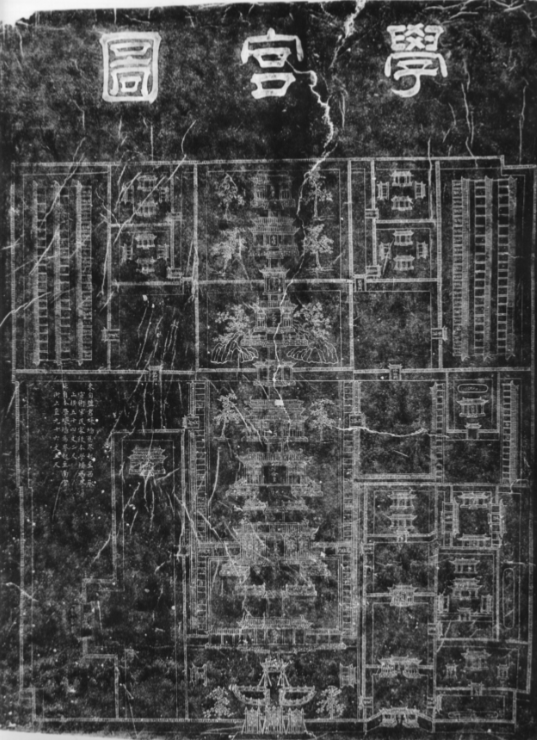
According to the Book of Rites, the Emperor of the Western Zhou Dynasty called the Palace of Xueyong as "Pianyong", and the academic palace built by the princes was called "Palace", "泮", which means "half", which means half of the palace of Tianzi. Later generations should set up a pond when building the palace. When the talent enters school, it is necessary to walk around the pond, so it is also called "entering the puppet".
Big door
The name is taken from the meaning of the ancient cultural sages of Confucius.
Dacheng Hall
The main hall of Confucius is worshiped. There are also gallery on both sides of the main hall, which is used to sacrifice Confucius' disciples and famous Confucian Confucianism.
Chong Temple
The place where the five generations of the Confucius were sacrificed.
Minglun Hall
The place where Xiucai is in class, the word "Minglun", is to teach people to understand ethics.
Thank you
In this column, the article "Three Ancient Lakes Yunying Lakes Top Tens of New Lakes" was published on July 13th. Time is wrong. After careful inspection of historical materials by the studio, the artificial lake excavation period of Yuexiu Park should be thanks in the 1950s. Thanks for this! I sincerely thank the readers for their love and care for "Yueyun Weekly", and at the same time, they welcomed all walks of life to contribute Jin Yuliang's words and jointly run "Yueyun Weekly".
Coordinating/Reading Guangzhou Studio Essay/Guangzhou Daily · Xinhuacheng reporter Zhang Zhongantu/Interviewee provided (except for signatures) Poster Copy: Lin Weilin Poster Production: Liu Zanwen Guangzhou Daily · Xinhuacheng Editor: Zhang Yu
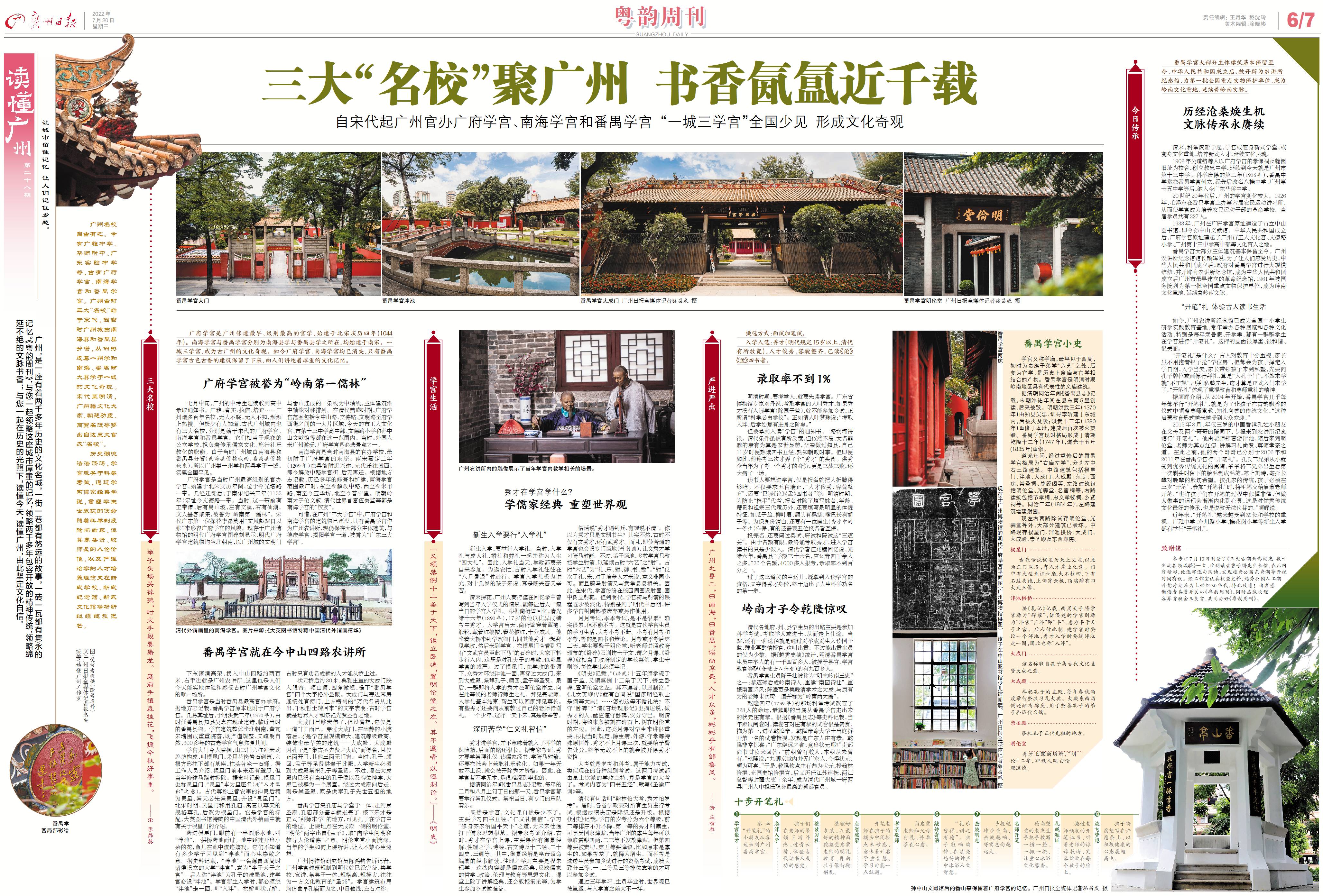
- END -
Cool!Eat a bite of watermelon in the 14 -meter -deep subway tunnel

The Yangtze River Daily Da Wuhan Client July 12th. On the 11th, the scorching sun ...
From here, open the "carbon search door"

Zhongnan Road-Zhongbei Road is the financial main axis created by Wuchang District...